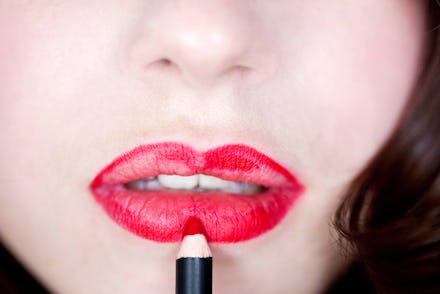This Young Woman Invented a Machine That May Doom the $55 Billion Makeup Industry

The news: A new product could pose a threat to the $55 billion makeup industry — an at-home, 3-D makeup printer which can produce eye shadow, blush, and lip colors in the same FDA-approved ink that traditional manufacturers use. Soon you might produce your own makeup for a fraction the price of dishing out for premium brands.
"The makeup industry makes a whole lot of money on a whole lot of bullshit," inventor Grace Choi said at TechCrunch Disrupt earlier this week. "They charge a huge premium on something that tech provides for free. That one thing is color."
Her solution is Mink, which costs $300 and and uses regular printer ink.
"The inkjet handles the pigment, and the same raw material substrates can create any type of makeup, from powders to cream to lipstick," Choi says.
Here's how it works. Pick a color...
And print it using the hex code.
Use your printed makeup.
That's quick. While Mink doesn't seem to currently have an easy-to-use UI like a program or an app (yet), it's still capable of printing out a block of makeup in far less time than going to the store or even ordering online. And if it becomes popular, that's a big problem for the makeup industry, which Mint.com says the average woman spends $15,000 in throughout her entire life. Choi's product will pursue a younger demographic of 13-21-year-olds, but everyone who uses makeup regularly could potentially save money with Mink.
"Mink enables the web to become the biggest beauty store in the world," says Choi. "We're going to live in a world where you can take a picture of your friend’s lipstick and print it out."
Why you should care: If you want cheaper makeup, then Mink might be the gadget for you. But even if you don't, this isn't the only industry that 3-D printing may eventually challenge. Three French students were able to modify a 3-D printer to give a tattoo, eventually successfully printing a circle on a volunteer's arm. The surgeons used the University of Louisville's engineering school to 3-D print a model of a baby's heart, enabling them to properly prepare for risky operation. And you can even use 3-D printers to make a functional (but dangerous) gun. Eventually, 3-D printers could even build low-cost houses. Welcome to the future.